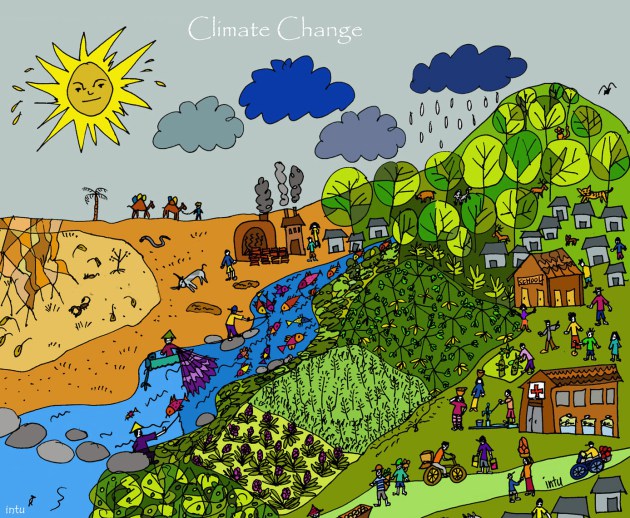NEW YORK—Today is an important day for our future on the planet. The United Nations Climate Summit gathers an impressive number of world leaders who will update their political and financial commitments to meeting the climate change challenge.
It is also an important day for to reflect on ways forward for research, outreach and capacity development—three dimensions of CIFOR’s work—to help transforming these commitments into actions on the ground.
In short—what does the summit tell us to do?
One part of the summit program is dedicated to eight “action areas”: Agriculture, Cities, Energy, Financing, Forests, Industry, Resilience and Transportation. For each of these, a large number of countries, civil society organizations and private corporations will sign off on summit statements that indicate how we should be moving forward.
Here I offer some thoughts on the circulated statements on agriculture and forests, and how they relate, in light of current interest in searching for good and integrated solutions across landscapes. Note that CIFOR, as an independent research organization, has not been directly involved in preparing these statements.
The New York Declaration on Forests focuses attention on deforestation or “natural forest loss.” Seven out of 10 bullet points address this issue directly, or indirectly by referring to reduction of greenhouse gas emissions from forests. Two points highlight forest restoration needs and one pushes for improved forest governance. Across the 10 points, two link to broader sustainable development aims and the post-2015 development agenda.
In its conclusion, the document states that the commitments have the potential to reduce emissions by “4.5 [billion to] 8.8 billion tons per year by 2030.” Climate change adaptation or resilience are not mentioned as potential outcomes. The accompanying Action Agenda presents a long list of ongoing or prospective initiatives, and it is expected that a number of direct commitments will be made at the summit.
By contrast, the Joint Statement for Agriculture, Food Security and Nutrition starts from the requirements to address inequities and ensuring adequate nutrition for a growing population, challenges that are becoming much bigger in the face of climate change and are adding to the vulnerability of poor people.
Climate-smart agriculture is promoted as a core approach to meeting these challenges, with its three pillars of equitable increases in incomes/productivity from farming, improved resilience of food systems and livelihoods, and reduced/removed greenhouse gas emissions from agriculture. A number of new or reinforced initiatives are listed, including The Global Alliance for Climate-smart Agriculture.
TOGETHER, A COMPELLING AGENDA
Putting the forest and agriculture statements next to each other, it is clear that they have separate geneses, and also that there are no explicit cross-references. The forest statement connects deforestation to agriculture, and conversely the agriculture statement makes note of impacts of agriculture on ecosystems in relation to emissions. Further, the forest statement generally notes the importance of forests for “food, water, fuel, medicines, traditional cultures and livelihoods.” The agriculture statement acknowledges the “essential role of farmers, fishers, foresters and livestock keepers.”
Taken together, the two statements provide a compelling action agenda for the world’s landscapes. One plus one could be more than two if the opportunities presented in the two documents are combined and solutions looked at together. The broad and strong political support offered by the summit to each of these statements, ranging from governments, to civil society, to the private corporate sector is certainly something to build on.
Looking ahead, one pertinent question is how the two can be combined. Navigating synergies and trade-offs between agriculture and forestry is essential on all geographic scales. So there appears to be a strong case for the landscape approach on all levels—from global to local. The essence of the landscape approach is to provide a framework and methodology so that multiple objectives in a landscape can be considered together by all concerned stakeholders.
In recent years, there has been an increased emphasis on landscapes for finding combined solutions to development challenges across land-based sectors. The Global Landscapes Forum in Lima, 6-7 December, provides an excellent opportunity to demonstrate how we can make the best of the combined agriculture and forest statements from the Climate Summit.
We want you to share Forests News content, which is licensed under Creative Commons Attribution-NonCommercial-ShareAlike 4.0 International (CC BY-NC-SA 4.0). This means you are free to redistribute our material for non-commercial purposes. All we ask is that you give Forests News appropriate credit and link to the original Forests News content, indicate if changes were made, and distribute your contributions under the same Creative Commons license. You must notify Forests News if you repost, reprint or reuse our materials by contacting forestsnews@cifor-icraf.org.


